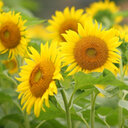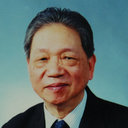Evidence-based Complementary and Alternative Medicine 2019
Combination of Ligusticum Chuanxiong and Radix Paeonia Promotes Angiogenesis in Ischemic Myocardium through Notch Signalling and Mobilization of Stem Cells.
Only registered users can translate articles
Log In/Sign up
The link is saved to the clipboard
Keywords
Abstract
Methods
Myocardial infarction (MI) mouse models were induced by ligation of the left anterior descending coronary artery. The effects on cardiac function were evaluated in the perindopril tert-butylamine group (PB group) (3 mg/kg/d), CX group (55 mg/kg/d), CS group (55 mg/kg/d), and CX and CS combination (CX-CS) group (27.5 mg/kg/d CX plus 27.5 mg/kg/d CS). RO4929097, an inhibitor of Notch γ secretase, was used (10 mg/kg/d) to explore the role of Notch signalling in the CX-CS-induced promotion of angiogenesis in the myocardial infarcted border zone (IBZ). The left ventricular ejection fraction (LVEF) and percentage of MI area were evaluated with animal ultrasound and Masson staining. The average optical densities (AODs) of CD31 and vWF in the myocardial IBZ were detected by immunofluorescence. Angiogenesis-related proteins including hypoxia-inducible factor 1-alpha (HIF-1α), fibroblast growth factor receptor 1 (FGFR-1), Notch1 and Notch intracellular domain (NICD), and stem cell mobilization-related proteins including stromal cell-derived factor 1 (SDF-1), C-X-C chemokine receptor type 4 (CXCR-4), and cardiotrophin1 were detected by western blot analysis.Results
Compared with the model group, the CX-CS and PB groups both showed markedly improved LVEF and decreased percentage of MI area after 21 days of treatment. Although the CX group and CS group showed increased LVEF and decreased MI areas compared with the model group, the difference was not significant. The AOD of CD31 in the IBZ in both the model and the CX-CS-I group was markedly reduced compared with that in the sham group. CX-CS significantly increased the CD31 AOD in the IBZ and decreased the AODs of CD31 and vWF in the infarct zone compared with those in the model group. The expression of HIF-1α in both the model group and the CX-CS group was higher than that in the sham group. Compared with the model group, the expression of FGFR-1, SDF-1, cardiotrophin1, Notch1, and NICD was increased in the CX-CS group. Notch1 and NICD expression in the CX-CS-I group was reduced compared with that in the CX-CS group.




